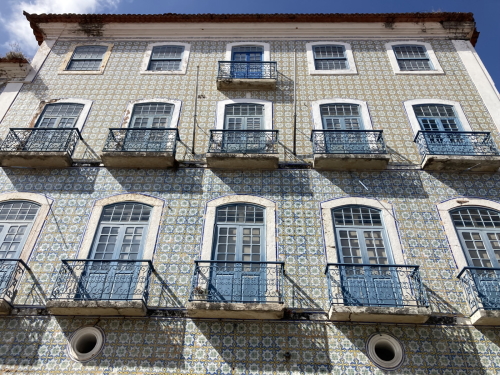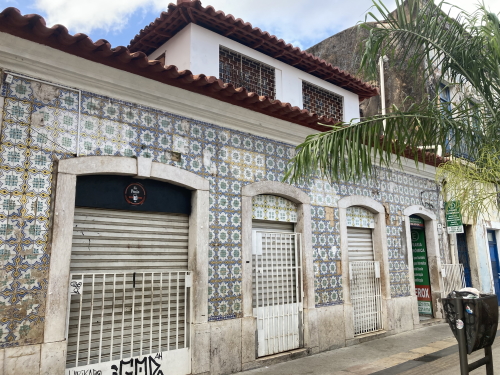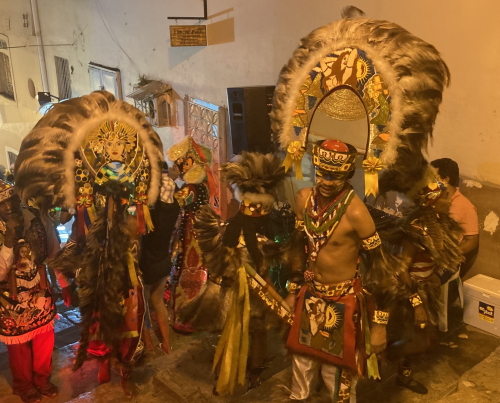Blog WHS Visits
WHS #812: São Luis
No community member so far has succeeded in ‘completing’ Brazil. This is surprising, as its list does not feature any particularly hard-to-reach sites. The main ‘issue’ is that there are many of them and all spread out across this vast country: it takes a lot of stamina and certainly cannot be done in one trip. The state capital of Maranhão, São Luis, is one often lacking. It lies isolated in the far north, but with the upcoming nomination of Lençóis Maranhenses National Park some 250km away it surely will start to attract more people.
The town shows its WH status proudly. There are already signs with the familiar logo and the subtitle ‘City of Tiles’ upon entering the city border. In the historical city center they have maps indicating the sights and the delimitations of the core zone. The maps show no less than 73 monuments and 29 squares, and that turned out not to be an exaggeration.
I had put together my own City Walk and that brought me to the following places:
The Upper town (on the site of the original French fort) holds all the important public buildings, including the City Hall and the seat of the State government. They are built in a neoclassical style and in good condition. The supersized Christmas decorations almost take over the scene at the moment.
I had started my walk at 8 a.m., the time that all the homeless started waking up. There were lots of street cleaners and some police around as well, so it didn't become uncomfortable. The town has seen mainly lows since the cotton export went bust in the late 19th century (that’s what the cityscape made to ‘freeze’ in that period), but it is on the way up again now. Many of the historic buildings look bright and shiny and the public space seems to be taken care of. However, it still is a far cry from the boutique hotels or the tourist hordes of Colombia’s Cartagena for example (which it resembles slightly).
Bypassing the Cathedral (which wasn’t open yet), I walked through a couple of shopping streets. One had examples of the modest small dwellings, single- or two-storeyed, which have facades decorated with azulejos too. So far I had only seen multi-story houses with balconies. All monumental buildings here seem to be either for sale or used by shops such as C&A, and one even is a parking garage. Like in Manaus and Belem, most buildings seem to have been made for commercial and public use and the number of churches is limited.
What also struck me is that not only there are lots of historical buildings with azulejo facades left, there’s a fair bit of Art Deco as well. Notable buildings include the former Roxy Cinema, the Post Office, and the Palacio de Commercio. There are even more, as I found out later in this study.
On my way back towards the river, I found the Franciscan cathedral now open. It is worth going inside as it has a striking gilded altar, a ceiling painting showing a Biblical scene in a landscape with palm trees, and of course plenty of azulejos on the floors and walls. Further south, there is a building that once housed a slave market (windows absent). The market building Mercado das Tulhas wasn’t too lively when I walked by.
I finished at the Casa do Maranhão. This is set in the former customs house, at a pretty location near the river. Its two floors are now in use as a folk museum, showing a good collection of costumes and other objects related to intangible heritage across all of Brazil.
I rated São Luis with 4 stars – I gave it half a bonus point for its festive atmosphere. I stayed in a guesthouse right at the heart of the historical center, and just when I was beginning to think in the evening that noise-wise this wasn’t the best choice, loud music started coming from the street. Live drumming it was, and certainly not by amateurs. From the open window in the lobby, I caught sight of a group of dancers dressed in ‘Indian’ costumes and drumming cowboys. A Bumba Meu Boi group! This specific folklore tradition hails from Maranhão and also has a spot on UNESCO’s Intangible Heritage List. I watched the performance from the ‘back’, and saw the drummers running back and forth to a fire they had started to reheat their goat leather tambourines to tune them.
Els - 11 December 2022
Comments
Jay T 11 December 2022
Completing Brazil does seem like an ambitious goal, with similar challenges for completion to the United States, Canada, and Russia (all with a modest number of sites that are spread out amongst a vast territory). I’m really surprised no one has currently completed it. I had thought João Aender had already completed it, but it looks like he now would need to make a visit to the newest site, Sítio Roberto Burle Marx. Thanks for the review of São Luis, and good luck on completing Brazil!


